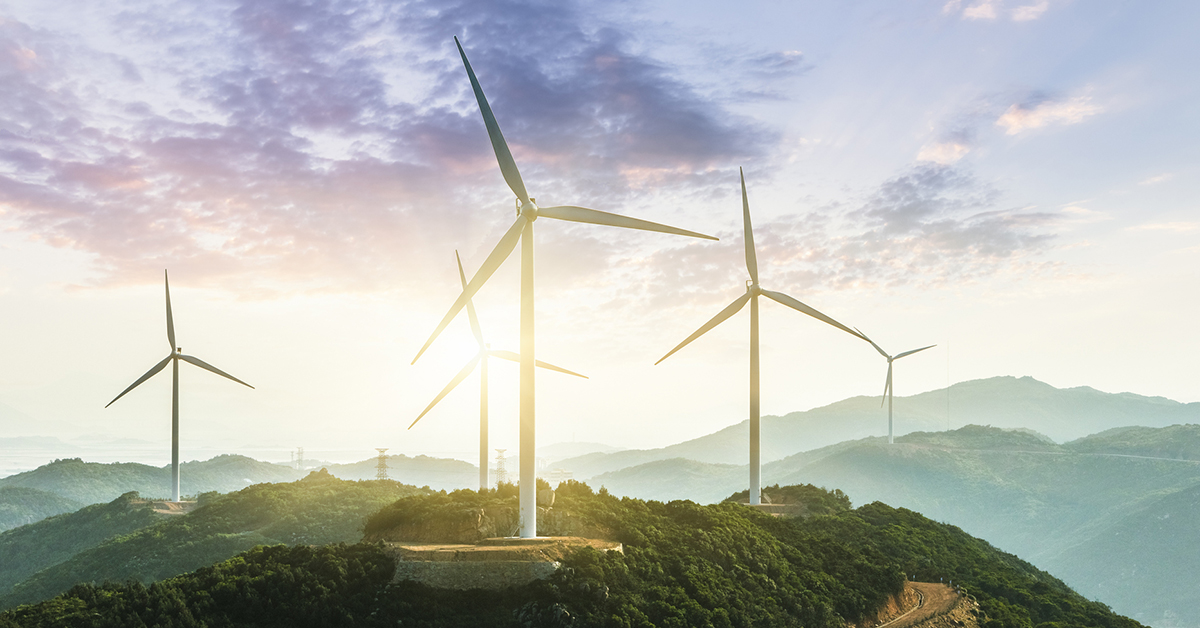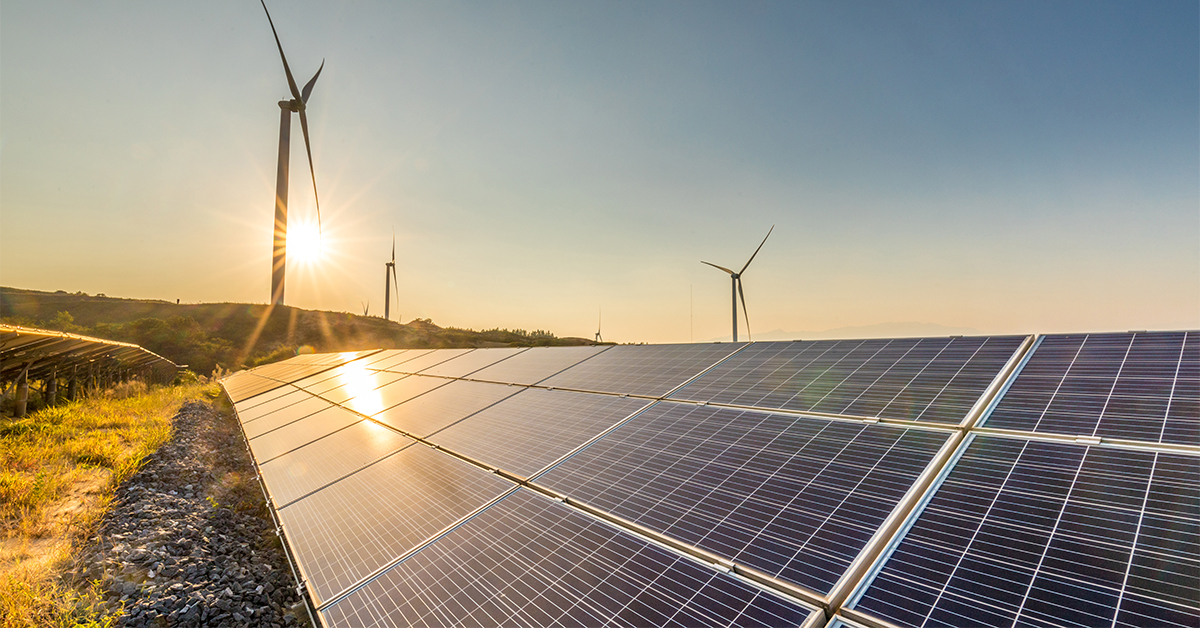Security Fears Are Turbocharging Nuclear Power’s Resurgence
15 April 2024
Share with a Friend
All fields required where indicated (*)When Russia invaded Ukraine in 2022, it sparked a global energy crisis that reminded governments everywhere of the need for secure energy. Fast forward two years and nuclear power generation is set to expand quickly as plans are made for new reactors.
There has been a sea-change in global policymaking towards nuclear energy, both to bolster security and reduce emissions. At the COP 28 conference last December, more than 20 nations – including the US, France and UK – pledged to work to triple global nuclear energy capacity by 2050.
While new generators can take many years to plan and build, global nuclear power generation is poised to break new records as soon as 2025, according to the International Energy Agency’s (IEA) Electricity 2024 report. New reactors are set to come on stream in markets like China, India, Korea and Europe.
Uranium’s Fortunes Rise
Against that backdrop, it’s no surprise that the price of uranium oxide – the main fuel for nuclear reactors – is soaring. After coming under pressure in 2011 when the Japanese Fukushima accident battered demand, they came to life again in 2021 when disruptions caused by COVID lockdowns hit supplies and created shortages. Since then they have rocketed more than 250%.1 Of course, this does not mean that price rises will continue.
That has lifted the fortunes and stock prices of the companies involved in the nuclear industry, as shown by the performance of the VanEck Uranium and Nuclear Technologies UCITS ETF (see chart below). From reactor manufacturers to uranium miners, industry shares have rallied sharply. Please note that this is not an indicator that share prices will continue to increase - they might fall back to previous levels or even drop lower. Investors should also take into account the sectoral concentration of the fund and risks of investing in the mining industry.
Past Performance of hypothetical $100 investment
Past performance is not a reliable indicator for future performance. Investing is subject to risk, including the potential loss of the principal. Currency risk may apply.
Source: VanEck. Data since inception (03/02/2023).
Rapid Renaissance
What happens now? The world badly needs reliable low-carbon electricity that can be switched on when the sun does not shine on solar panels and the wind does not turn turbines. As the world electrifies, so demand for electricity is increasing. Demand is also growing from data centers, artificial intelligence and cryptocurrencies. The IEA anticipates their electricity consumption alone will double by 2026. There is no guarantee that this forecast will materialize.
Nuclear is a main option available, which can also offer greater energy security for countries without their own oil and gas. Little wonder that Sweden has pledged another two reactors by 2035 and the equivalent of 10 more by 2045; Japan restarted three that had been mothballed in 2023; America recently connected its first new reactor in eight years. And then there is China, which plans a huge 150 reactors over the next decade.
New Technologies
The world’s new reactors will not be like those of the past, though, as technology is evolving. Existing technologies, like small modular reactors, will make a difference. These are compact and efficient, and some experts say they could transform the nuclear industry.
What’s more, the moonshot of nuclear fusion now seems somewhat closer, with research into commercializing it approaching a make-or-break moment. Unlike today’s nuclear fission reactors, fusion does not produce dangerous waste that needs to be disposed of.
If all this seems a little far off, think again. New nuclear fission reactors are already coming on stream across Asia, while the US and Europe are not far behind.
What the world wants from energy is changing. Governments are hastily making plans for more nuclear energy to guarantee a secure, low carbon future. As they do so, the nuclear industry seems back at the center of plans for power generation and potentially set to remain so.
1 Supply risks fuel uranium’s flight to more than 16-year peak. Reuters. 22 January 2024.
VanEck Asset Management B.V., the management company of VanEck Uranium and Nuclear Technologies UCITS ETF (the "ETF"), a sub-fund of VanEck UCITS ETFs plc, is a UCITS management company incorporated under Dutch law registered with the Dutch Authority for the Financial Markets (AFM). The ETF is registered with the Central Bank, passively managed and tracks an equity index. Investing in the ETF should be interpreted as acquiring shares of the ETF and not the underlying assets.
Investors must read the sales prospectus and key investor information before investing in a fund. These are available in English and the KIIDs/KIDs in certain other languages as applicable and can be obtained free of charge at www.vaneck.com, from the Management Company or from the following local information agents:
UK - Facilities Agent: Computershare Investor Services PLC
Austria - Facility Agent: Erste Bank der oesterreichischen Sparkassen AG
Germany - Facility Agent: VanEck (Europe) GmbH
Spain - Facility Agent: VanEck (Europe) GmbH
Sweden - Paying Agent: Skandinaviska Enskilda Banken AB (publ)
France - Facility Agent: VanEck (Europe) GmbH
Portugal - Paying Agent: BEST – Banco Eletrónico de Serviço Total, S.A.
Luxembourg - Facility Agent: VanEck (Europe) GmbH
Important Disclosure
This is a marketing communication. Please refer to the prospectus of the UCITS and to the KID before making any final investment decisions.
This information originates from VanEck Switzerland AG which has been appointed as distributor of VanEck products in Switzerland by the Management Company VanEck Asset Management B.V., incorporated under Dutch law and registered with the Dutch Authority for the Financial Markets (AFM). VanEck Switzerland AG’s registered address is at Genferstrasse 21, 8002 Zürich, Switzerland.
The information is intended only to provide general and preliminary information to investors and shall not be construed as investment, legal or tax advice. VanEck Switzerland AG and its associated and affiliated companies (together “VanEck”) assume no liability with regards to any investment, divestment or retention decision taken by the investor on the basis of this information. The views and opinions expressed are those of the author(s) but not necessarily those of VanEck. Opinions are current as of the publication date and are subject to change with market conditions. Certain statements contained herein may constitute projections, forecasts and other forward-looking statements, which do not reflect actual results. Information provided by third party sources is believed to be reliable and have not been independently verified for accuracy or completeness and cannot be guaranteed. Brokerage or transaction fees may apply. A copy of the latest prospectus, the Articles, the Key Information Document, the annual report and semi-annual report can be found on our website www.vaneck.com or can be obtained free of charge from the representative in Switzerland: First Independent Fund Services Ltd, Feldeggstrasse 12, 8008 Zurich, Switzerland. Swiss paying agent: Helvetische Bank AG, Seefeldstrasse 215, CH-8008 Zürich.
All performance information is based on historical data and does not predict future returns. Investing is subject to risk, including the possible loss of principal.
No part of this material may be reproduced in any form, or referred to in any other publication, without express written permission of VanEck.
© VanEck Switzerland AG
Sign-up for our ETF newsletter
Related Insights
Related Insights
14 March 2024
15 March 2024
14 March 2024



